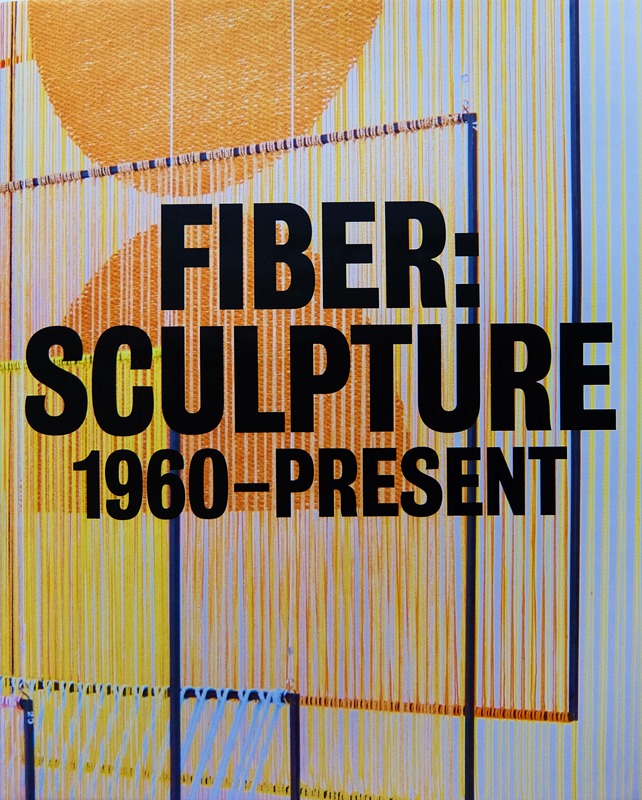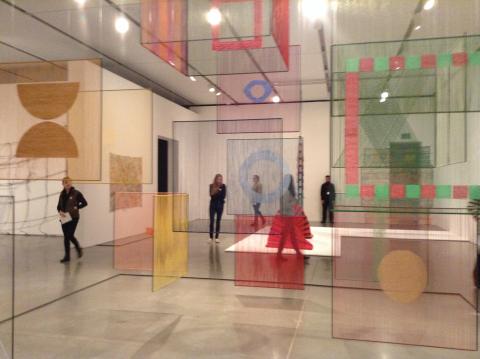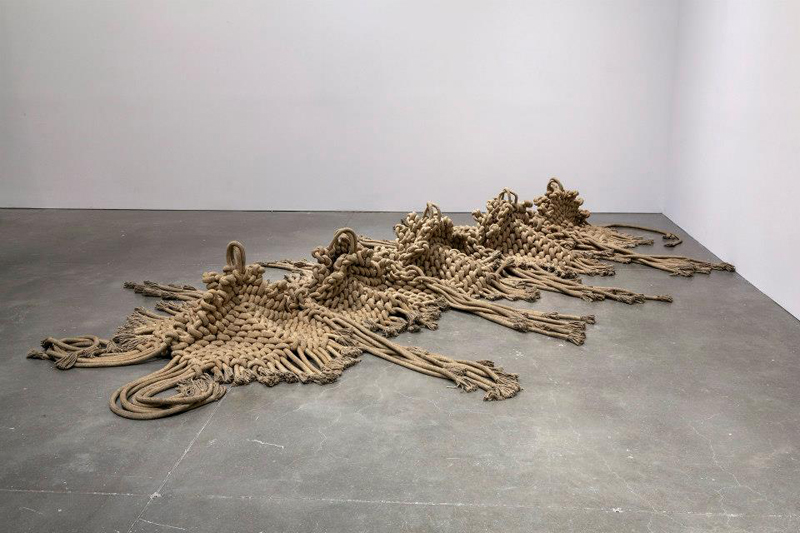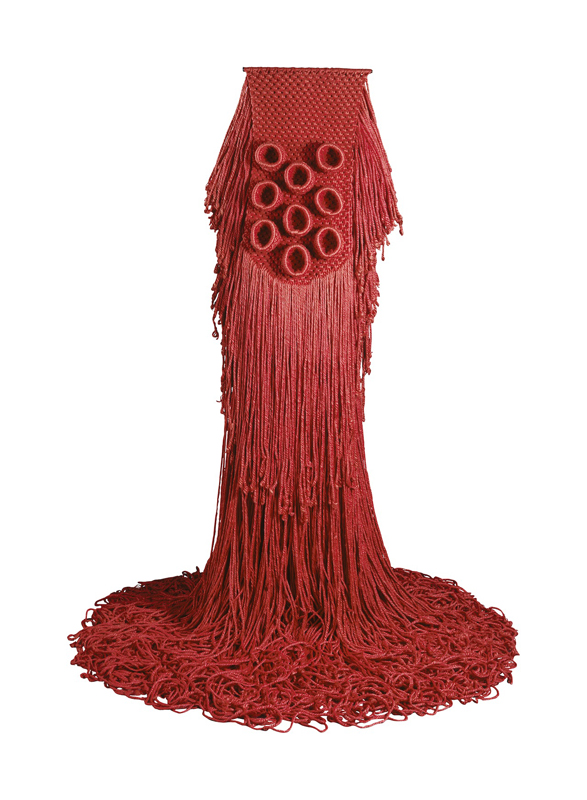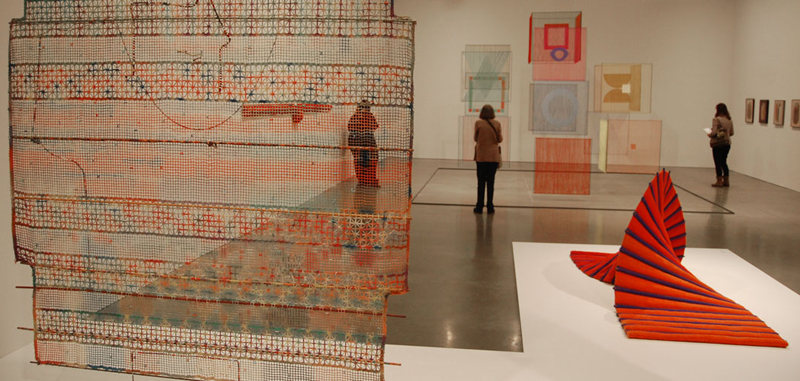
Fiber: Sculpture 1960 – Present, Jenelle Porter (editor), The Institute of Contemporary Art, Boston/USA, DelMonto Books – Prestel, Munich, London, New York, 2014; 256 pages, 136 colour- and 43 black & white illustrations, text English, ISBN 978-3-7913-5382-1, price approx. 35 Euro.
The exhibition Fiber: Sculpture 1960 – Present (organised from 1.10.14 to 4.1.15 at the Institute of Contemporary Art in Boston) and its catalogue are important in the history of textile art. The ambitions of the curator Jenelle Porter are clearly defined:”This is the first exhibition in 40 years to examine the development of abstraction and dimensionality of fiber art from the mid-twentieth to the present”. Finally an exhibition in a high-level museum, placing textile in the context of fine art with exhibiting artists who know about textiles, who are masters in textile techniques and who are great contemporary artists. Nearly no fine art with accidental use of textiles as was the case in the exhibitions we have seen recently in Europe like e.g. Art & Textiles in Wolfsburg.The pioneers mentioned in this catalogue with good right are Magdalena Abakanowicz, Sheila Hicks, Lenore Tawney and Claire Zeisler. Further especially mentioned names are Olga de Amaral, Eva Hesse (who was missing in any of the recent European fine-art-with-textile-exhibitions) and Rosemarie Trockel, who was represented with really interesting textile-related works here. The 34 artists in the exhibition – 27 of whom are women – are showing ” small-scale weavings to immersive environments all made in fiber”. There are 4 articles in the catalogue: “The Materialists” by Jenelle Porter; “Soft Power” by Glenn Adamson; “Tapestries in Space an Alternative History of Site-Specifity” by T´ai Smith and ” About 10 Years from New Tapestry to Fiber Art” again by Jenelle Porter. This last article seems really important to me because the author is talking about “seeking to resists entrenched histories” and “a revolutionary new category of art” is giving honour to Lenore Tawney who managed “to take away the conversation from craft to sculpture” at a very early time. Tawney had her first exhibition of “Woven Forms” in 1961. Lausanne started in 1962 and in 1963 the American Craft Museum organised a “Woven Forms” exhibition. Porter is seeing the whole revolution taking place within a short time, from 1962 to 1972: “By 1972 the transformation of tapestry into a form known as “fiber art” represented an expansion of the category of sculpture by a generation of artists who approached art making with radical new ideas”.
A further amusing and insightful essay is “Soft Power ” by Glen Adamson, here some sentences:
Museums worldwide are filled with them. Often positioned at eye height, they stare you in the face. Yet in the collected annals of art history, hardly any notice is given to them. They are the unmentionables of the Western canon, hiding in plain sight.
I refer to limp penises.
One could write a cultural history on this topic. This essay won’t be that history, quite, but I am to make a start. Eventually, I will get round to fiber art in the post-1960-era — another notably disregarded topic — and suggest that a certain uncomfortable flaccidity is strongly associated with this material. This may be one reason why it did not, as hoped, enter the mainstream.
The exhibition will be on view from 30.1 to 5.4.2015 at the Wexner Center for the Arts in Columbus, Ohio/USA and from 8.5 to 2.8.2015 at the Des Moines Art Center in Iowa, USA. I can only advise everyone, not able to see this exhibition to get a copy of the catalogue that is available via amazon.
Beatrijs Sterk
